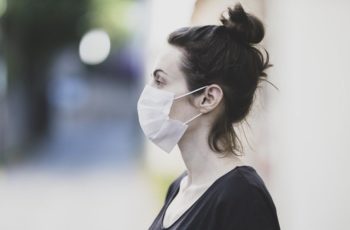Vitamins are essential nutrients that promote normal growth and development of human body. Along with minerals, they perform tons of important body functions that keep us healthy and alive.
Vitamin D is one of the significant vitamins required by human body to function properly. But in past few years, it has been observed that Vitamin D deficiency is increasing amongst Indians at an alarming rate. Blame it to the indoor lifestyle or increasing pollution levels, there’s no denying the fact that our generation is not getting enough of the recommended daily intake of Vitamin D. Studies have shown that not only old age people but majority of the Indians, including pregnant women and youngsters, are at a higher risk of being Vitamin D deficient. So, how to ensure that we get enough of this important vitamin? Let’s find out.
Why is Vitamin D essential for optimal health?
Vitamin D helps the body absorb calcium and phosphorus – 2 essential nutrients for strengthened and healthy bones. If there’s not enough Vitamin D in our body, our bones will become fragile and breakable.
Did You Know?
There are 2 main variants of Vitamin D: Vitamin D2 and Vitamin D3. Vitamin D3 is considered to be more effective than Vitamin D2 in raising Vitamin D levels in human body.
Risks associated with Vitamin D deficiency
Vitamin D deficiency can develop Rickets in children, Osteomalacia in adults, and Osteoporosis in older adults. Rickets prevents normal growth of the bones and weakens the immune system. Osteomalacia softens the bones and causes pain and fractures. Osteoporosis makes the bones thin which leads to bone fragility.
Recent studies have also linked Vitamin D deficiency to a few significant diseases such as diabetes and high blood pressure and even cancer (breast cancer, prostate cancer and colon cancer).
How to identify a Vitamin D deficiency?
There’s a specific blood test to measure Vitamin D deficiency, known as 25-Hydroxy Vitamin D Test. It determines the levels of Vitamin D in our body.
Main Sources of Vitamin D
Vitamin D is mainly sourced in 3 ways: by exposing our bodies to sunlight, by including Vitamin D-rich foods in our diet, and by taking supplements.
- When human body get exposed to sunlight, it produces Vitamin D (D3) naturally through absorption of the UV-B (Ultraviolet-B) rays.
- Foods such as fatty fish (salmon, tuna, etc.), seafood (oyster, shrimp, etc.), egg yolk, mushrooms, and fortified foods (cow’s milk, tofu, oats and breakfast cereals, etc.) are some good sources of Vitamin D.
- Cod liver oil is a brilliant source of Vitamin D that you may take as a supplement.
Did You Know?
Fortification is the process of adding extra nutrients to foods in order to reduce dietary deficiencies in individuals. These foods when enriched with micronutrients are called fortified foods.
Final Words
Direct exposure to sunlight is probably the easiest way to increase the levels of Vitamin D in our bodies. However, too much direct exposure may result in damage of skin cells, causing skin problems, and even skin cancer. According to studies, midday or noon is the best time to soak in Vitamin D from sunlight. Expose 20% of your body to direct sunlight for at least half an hour to make adequate Vitamin D. Do not apply any sunscreen to ensure proper absorption of the UV-B rays.


